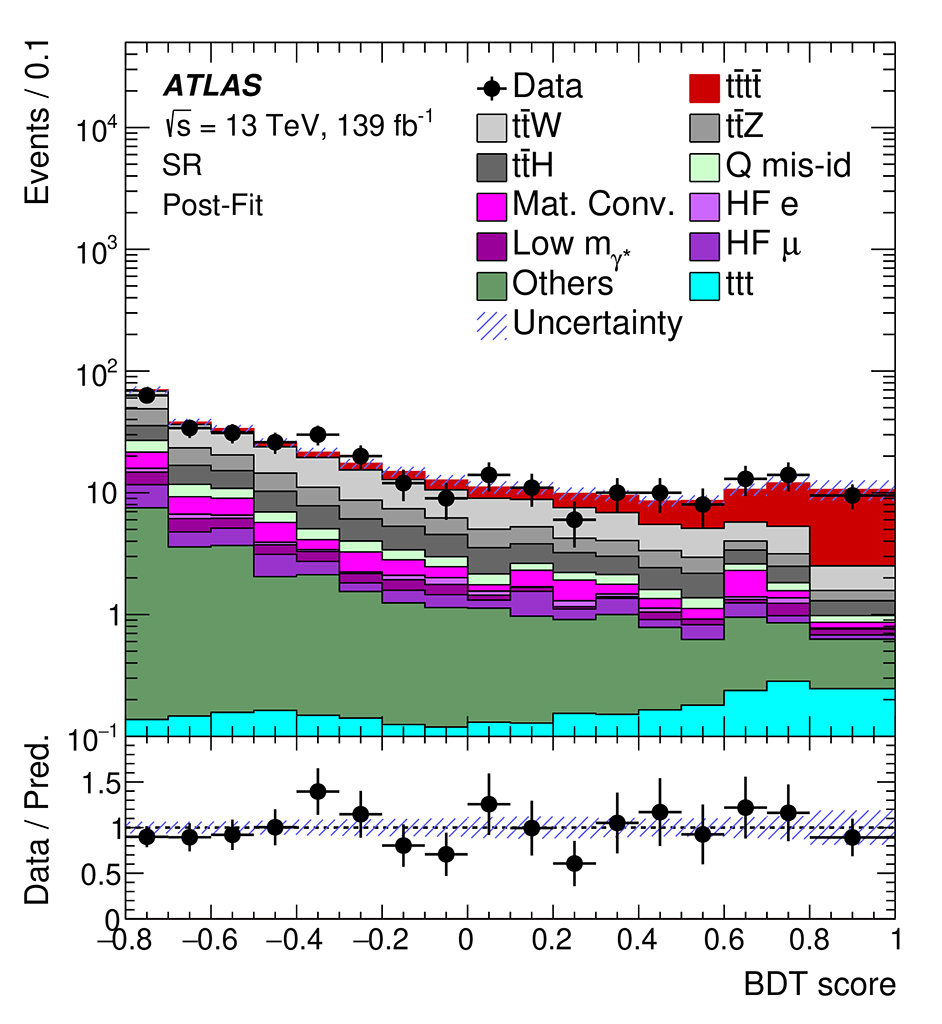Aurelio Juste – Institut de Física d’Altes Energies (IFAE)
During 2015-2018, the Large Hadron Collider (LHC) at CERN collided protons at a center-of-mass energy of 13 TeV, the highest energy ever reached by a particle accelerator. One of the main goals of the ATLAS experiment at the LHC is to challenge the predictions of the Standard Model (SM), our most successful theory of elementary particles. To this end, a promising direction is the study of the top quark, the heaviest elementary particle known, with a mass close to that of a gold atom.
The production of two top quarks and two antitop quarks (“four-top-quark” production) is a very rare process in the SM, happening only once every 1012 collisions. However, new particles beyond the SM can significantly enhance this rate. Once produced, each top quark decays into a W boson and a bottom quark, with the W boson decaying into a charged lepton (electron, muon, or tau) and a neutrino, or a quark-antiquark pair. This results in some of the most spectacular signatures ever produced at the LHC. The ATLAS Collaboration has recently reported strong evidence for the production of four top quarks a milestone reached by studying events with two same-charge leptons or three leptons, plus additional jets originating from the bottom quarks. The signal significance amounts to 4.3 standard deviations (s.d.), for an expected significance of 2.4 s.d. in the SM. This means that the measured rate is somewhat above the SM prediction, although still consistent with it within 1.7 s.d. Since 2015, researchers at IFAE, under A. Juste’s leadership, are playing a major role in the search for four-top-quark production in ATLAS.
The team has not only contributed to the recent result, but is also completing a search for this process in a complementary channel featuring only one lepton or two opposite-charge leptons. The combination of both searches is expected to yield the observation of this process. Additional data from the next LHC run, to start in 2022, along with further developments in the analysis techniques, will improve the precision of this challenging measurement, and hopefully allow drawing definite conclusions on whether the breakdown of the SM is finally in sight.

